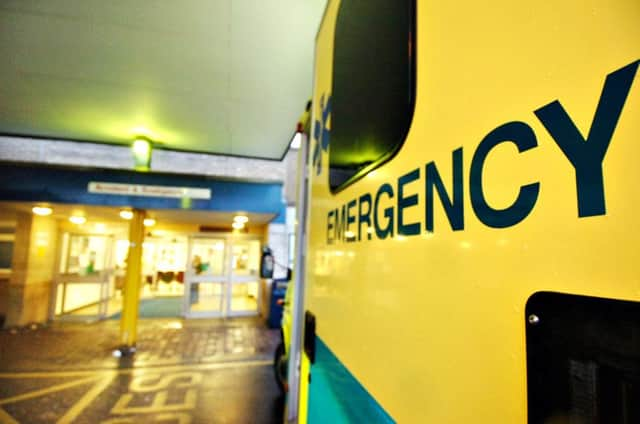Yorkshire's 999 staff defend accident record amid pressure of modern roads


Traffic congestion, tiredness and travelling long distances to emergencies put added pressure on workers.
The insight into the pressures staff face inside ambulances on the road comes as figures obtained under the Freedom of Information Act reveal that the Yorkshire Ambulance Service NHS Trust’s (YAS) emergency vehicles were themselves involved in more than 2,000 crashes between 2015 and 2017.
Advertisement
Hide AdAdvertisement
Hide AdAmbulance service paid out millions in compensation payments after vehicle accidents
Yorkshire paramedic Steve Krebs said he believed the majority of the collisions would likely have been minor bumps or scrapes at low speeds, which he says can be difficult to avoid in high-pressure situations on busy roads.
“There is some tiredness involved because of the length of the shifts which we have been working but some of that is being alleviated by rota changes now.
“A lot of the crashes will be down to the distances we are travelling to emergencies, some times that can be 20 or 30 miles, and obviously someone might not be breathing so we have got to get there as soon as possible.
Advertisement
Hide AdAdvertisement
Hide Ad“It’s not just about high speed stuff, it’s little things like going through narrow streets or misjudging things slightly through tiredness.
“There is also the environment, wind, snow, ice and rain.”
YAS said it carried out maintenance checks and inspections on its emergency vehicles every 10 weeks as a minimum, and the service had recently completed a review of its rota system after seeking views from staff.
Almost one quarter of the 2,295 collisions happened after ambulances hit a stationary vehicle or “object”, and 117 trust vehicles were hit while parked during the two-year period. Some 221 of the crashes occurred after an ambulance “reversed into a stationary object” or vehicle, the figures show.
Across the county, one fifth of the total number of collisions happened in the Leeds, Bradford and Airedale district.
Advertisement
Hide AdAdvertisement
Hide AdSome 416 occurred in South Yorkshire, and there were 320 during the two-year period across Calderdale, Kirklees and Wakefield.
In North Yorkshire, 277 collisions took place and East Yorkshire recorded the lowest, at 197.
Mr Krebs said the uncertainty of what other motorists may do when an ambulance is approaching, and an increasing volume of traffic in Yorkshire’s towns and cities, makes it difficult for emergency drivers.
Mr Krebs urged the public to slow down, pull their cars to the side and be mindful when an emergency vehicle is approaching.
Advertisement
Hide AdAdvertisement
Hide Ad“The volume of traffic on the road is a really big thing too,” Mr Krebs said.
“And the uncertainty of the public driving and what they’re are going to do, if they’re going to move out of the way.
“I’ve seen some people panic when they see an ambulance, sometimes they just sit in the middle of the road.
“We try to avoid as much as we possibly can but it’s really difficult.
Advertisement
Hide AdAdvertisement
Hide Ad“We need people to understand that if you see us coming, to slow down and pull over to let us through.
“Some people don’t even see us coming.”
The figures also show that 20 pedestrians and 16 animals were struck by ambulance service vehicles during the period covered by the study.